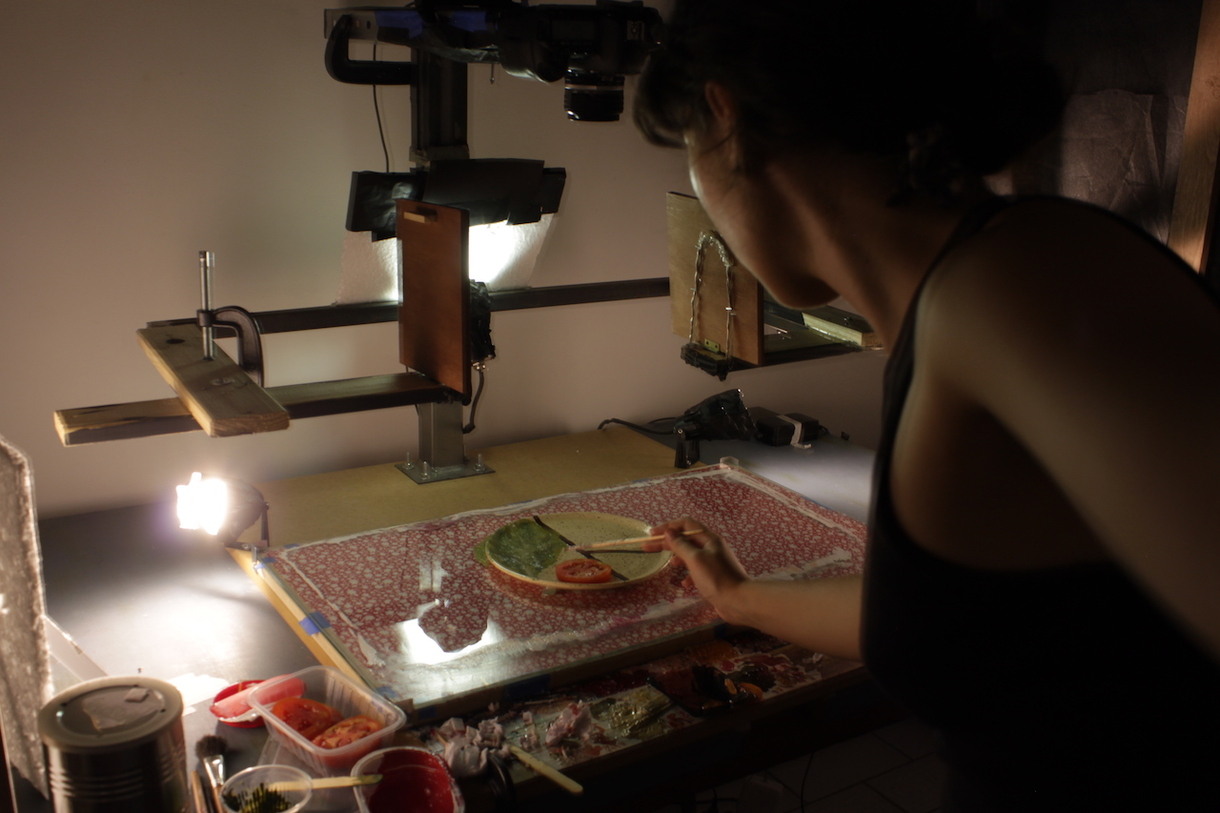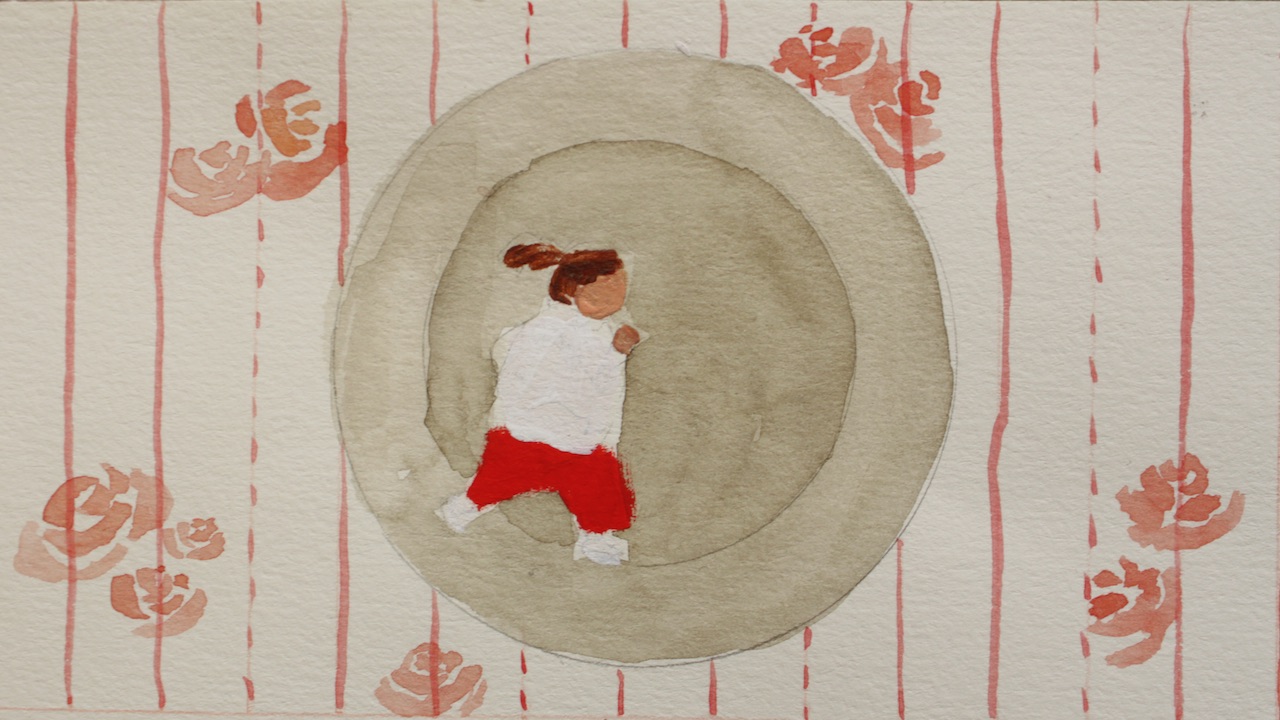

How They Did It: Telling Five Women’s Stories In Five Different Styles In Camila Kater’s ‘Flesh’
Rare, medium rare, medium, medium well, well done: these are the stages of a woman’s life.
This analogy structures Flesh (Carne), a five-part anthology film from first-time director Camila Kater. Each segment presents a real woman’s account — recorded and heard in the film — of an experience relating to her body, with her age at the time ironically likened to a cooking point. The meat metaphor determines the film’s red-brown palette, and captures a running theme in the women’s stories: “how we women are seen as bodies before human beings,” as Kater puts it.
Kater, who comes from Brazil, has a background in stop-motion — she animated the first segment of Flesh, which combines oil painting and object animation. But while developing the film, she let its content dictate its form. The result: each segment is made in a different medium by a different (female) animator. Just as the women’s stories convey a range of experiences with common threads, the visuals represent a variety of ways of making animation.
Since premiering in August, Flesh has already had a distinguished festival run, playing at the likes of Toronto International Film Festival and earning a dozen prizes (including the 2021 Oscar-qualifying documentary prize at ZINEBI), as well as a nomination at the upcoming Quirino Awards. No wonder: debut films this polished and ambitious are rare. Well done.
Casting

Kater: I wrote the treatment for the film with my sister. The goal was to discuss how we women relate to our own body in different ages and how race, sexual orientation, gender identity, and profession can generate different experiences. In some chapters, the subjects were related to my own experience as a woman, child, and daughter; in others, I wanted to portray different points of view, from women that face other kinds of conflict.
I created profiles for each chapter. For example, in the “Rare” phase I wanted a woman talking about being fat during her childhood. For “Well Done” I wanted someone who was a muse in her twenties/thirties and is now in her seventies/eighties. I wanted to know about a more mature perspective.

To find the interviewees, we did a lot of research and we also released a form online. Rachel Patrício is an activist against fatphobia in Brazil. Larissa Rahal is my sister’s friend and her story of her first menstruation struck me. Raquel Virgínia is a famous singer and composer (from the band As Bahias e a Cozinha Mineira) who is active in advocating for black and LGBTQI+ communities.
Valquiria Rosa is a percussionist and had very uncomfortable experiences going to the doctor as a lesbian in perimenopause. Helena Ignez is a famous actress and director in Brazil and she is considered the muse of Cinema Novo and Cinema Marginal during the 1960s and 1970s, two remarkable movements from the Third World Cinema.
Writing
Kater: Before the interviews I created a structure with five chapters, and five profiles linked to a main subject, each one representing a stage of women’s lives. From that, with my co-writer Ana Julia Carvalheiro, I prepared general and specific questions for the interview concerning the topics we wanted to approach.
The interviews went pretty naturally, like a chat. During this process, I was very inspired by their powerful stories and I was already making some storyboard drafts and script decisions. It is a big responsibility to be in charge of telling five women’s intimate stories, and my greatest fear was to misrepresent their stories.
Once we had the recordings, I worked alongside my editor Samuel Mariani to edit six hours of audio material into 12 minutes. When we were happy with the edit, I started storyboarding and writing the script with Ana Julia Carvalheiro. Basically everything came from the interviews. All the visuals were scripted and storyboarded to create a sensorial perception of each story.

Visual development
Kater: The idea of multiple mediums came after the first interview with Rachel Patrício. At first Flesh was supposed to be made in 2d digital animation, but hearing her experiences inspired me to try out and explore other techniques, using oil paint over a plate or animating real food and objects. I thought that using different mediums would empower the diversity of the protagonists and create a sensorial synchrony between the plastic form of animation and the stories themselves.
The second chapter was about puberty and periods, therefore using watercolor to represent this fluid stage and the blood came very naturally. The next chapter is Raquel Virgínia’s stories about being a black transgender woman in Brazil. She is always talking about energies that people project in her presence and how she has to deal with it. I thought that 2d digital animation with glitches would be a way to visualize all these energies and tensions — negative reactions which are not natural, but structured into our heteronormative society.

The perimenopause chapter is about another strong phase where the body is facing deep changes and clay fit perfectly, with its plasticity and malleability. The last chapter is the voice of the classic actress Helena Ignez, so using a real 35mm film strip, and painting and scratching over it, seemed to be the perfect match. Apart from that, abstract painting on the film strip came out very visceral, looking like flesh.
The design of each chapter came from the animators. From the very beginning I wanted each one of us to be able develop our own visual style. We still don’t have this kind of opportunity working in animation studios, so this creative space was important to us. We worked together, sharing references and discussing the responsibility of representing these women.
Animation
Kater: I already knew three of the animators — animation is a small world. Giovana Affonso is a very good watercolor artist and she was studying animation. Flávia Godoy works with 2d animation and I was very fond of her animation posts on Instagram. I worked as an art assistant with Cassandra Reis on a stop-motion feature film and I love her debut animated documentary Lé com Cré.
I was still looking for an animator who had worked before with direct paint on film strip, so a friend told me about Leila Monsegur, who is actually an Argentinian artist who also lives in Brazil. I enjoyed her work and it was all settled.
As we don’t have a studio, we all animated in our own houses, and even in our bedrooms. Samuel Mariani, the editor and director of photography, is my partner, and we would spend hours discussing which lines we should include in the film. I had regular online meetings with the animators and we used to share every animation piece we did on our Whatsapp group.
I would help them when they needed me. I also helped to set up the clay set, and I worked alongside Giovana to do the time-lapses with watercolor and digitalize all the frames. I also went to Spain to coordinate the post-production team with my co-producer Chelo Loureiro (Abano Producións).
The software
Kater: Dragonframe for the stop-motion. Toon Boom, Photoshop, and TVPaint for the 2d animation.
For more, follow the film’s Instagram account.

.png)


